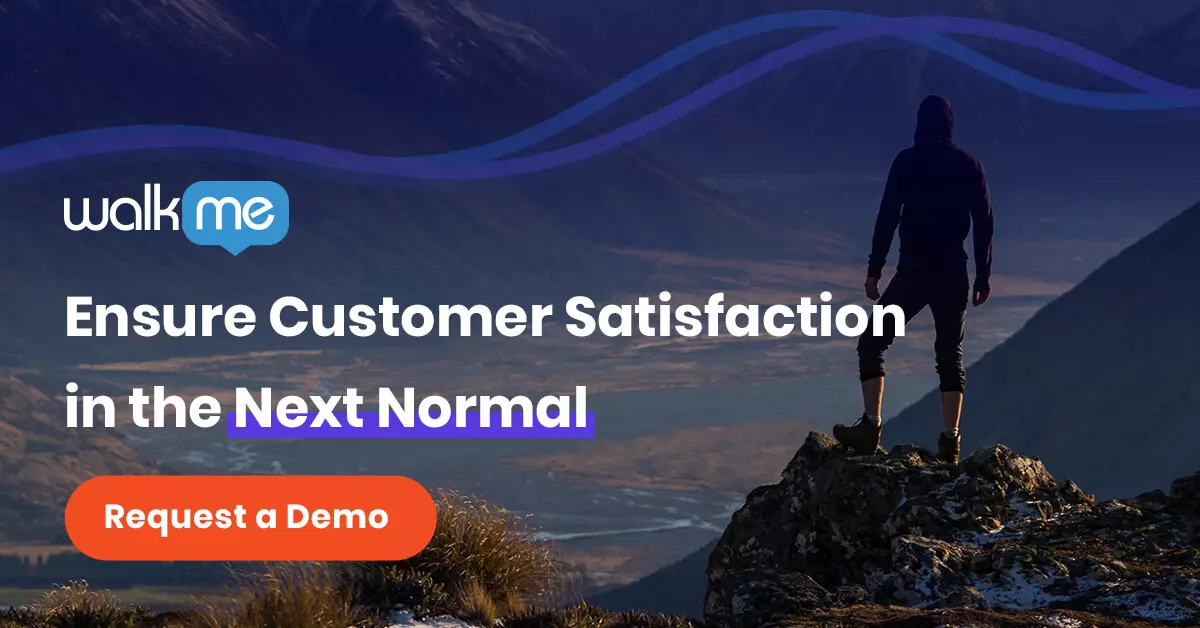Customer expectations shifted dramatically in 2020 and many of those changes are here to stay. Adaptation will be essential for maintaining healthy customer relationships in the new normal.
Below, we’ll look at some of the ways customer expectations shifted and how companies can adapt in the months and years ahead.
4 ways customer expectations evolved in 2020
We’re all doing our best to move on from the pandemic, but it has already made its impact on trends concerning customer needs, sentiment, expectations, and the way people interact with brands.
Many research firms and consultancies expect that some of these trends will roll back, while others will continue or even accelerate.
For instance, once public safety concerns have died down, many have indicated that they want to travel and return to malls.
Yet other trends will not reverse course or slow down:
1. The demand for connectivity and speed
With everyone stuck at home, internet use surged by 70%!
A survey from Pew Research verified this, finding that more than half of all Americans felt the internet was “essential” during lockdowns and 34% said it was “important.”
2. Omnichannel customer service
Broadridge, a financial technology company, found that 70% of Americans took a step towards greater digital interactions with at least one provider, and 60% believed companies need to improve their customer experience.
The survey also pointed out that customer expectations have changed permanently, with 56% of consumers believing that COVID-19 has fundamentally influenced the way they interact with brands.
Finally, the survey also found that 84% of customers want companies to make it easy to interact across all channels.
Together, these data points suggest that omnichannel customer service is here to stay.
3. Customer-centric business models
To account for customers’ changing expectations, it’s often necessary to adopt new business processes. Some extreme cases even require entirely new business models.
Agile approaches are one example, and a number of business consultancies have emphasized the importance of staying agile and customer-centric.
Companies that stayed agile in 2020 outperformed those that didn’t. One of the reasons for this is that agile companies can reprioritize quickly, keeping customer needs at the center of their operations.
4. Brand image
Customers have always been fickle when it comes to bad experiences. Who can blame us? We’ve been spoiled by lightning-fast internet and same-day deliveries.
A number of research studies have shown that a single bad experience can drive away a significant percentage of customers. In 2017, for example, PwC found that about 32% of customers would leave a brand after even one bad experience.
For better or for worse, this demand for excellent experiences hasn’t changed. Broadridge’s survey honed in on personalized customer experiences. They found that many people would actually leave a brand if the company did a poor job of personalizing the experience—between 28% and 59%, depending on the age group.
4 ways to adapt to customer expectations in the new normal
Customer expectations are clearly rising, and, as we can see from the last example, meeting those expectations is critical to maintaining a loyal customer base.
Here are a few ways businesses can adapt their customer experience strategies for the 2020s:
1. Personalize
Personalization can be applied at every stage of the customer journey, including:
- Marketing
- Sales
- Onboarding
- Customer service
The correct use of analytics and data-driven methods is key to understanding customer expectations. When used properly and respectfully (hello GDPR), data—which can be acquired from customer surveys and analytics, among other sources—can be used to create individualized experiences at each step of the way.
2. Adopt agile methods
By embedding customer-centrism into business processes, organizations can make adjustments as quickly as the minds of their customers shift.
When customer demands change, as they did so rapidly in 2020, organizations can reprioritize, recover, and continue to deliver customer-centric products and services with minimal interruption.
3. Deliver omnichannel customer experiences
Omnichannel and multiexperience refer to the idea that companies must deliver consistent, seamless customer experiences that span multiple technologies and touchpoints.
There are several reasons for this.
One is that some audiences prefer certain devices. Baby boomers may be more likely to use their desktops for larger purchases, while millennials may prefer to use their mobile phones for everything.
Another reason to deliver omnichannel experiences is that customers bounce between channels throughout their relationship with a brand—before, during, and after a purchase.
4. Be fast
Customer patience is short and it’s only whittling down as accessibility grows.
Not only are people impatient when it comes to telephone customer service, they are impatient when it comes to digital interactions. Slow websites, poorly designed UIs, sluggish apps, and other delays can be costly.
One of the best ways to remedy these delays is with pre-emptive technology.
Chatbots, in-app guidance, data-driven personalization, and high-performance IT infrastructure are just a few ways companies can use digital solutions to cut wait times and improve the customer experience.


